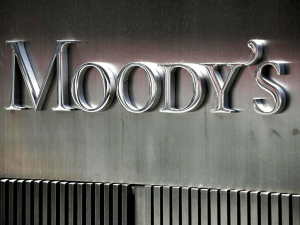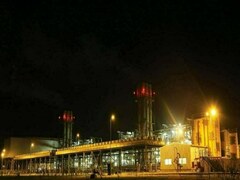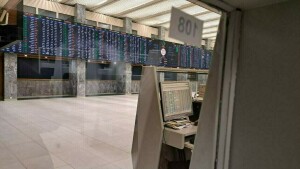The yuan ended slightly higher against the dollar on Friday as China posted a bigger than expected trade surplus, but dealers said it should have little room to rise further and its effective peg to the dollar, in place since mid-December, would remain in the near term.
Chinas exports fell 17.1 percent in March from a year earlier while imports fell 25.1 percent, resulting a surplus of $18.56 billion, the official Xinhua news agency said on Friday. Economists had expected a $10.4 billion surplus based on a 21.5 percent fall in exports and a 22.0 percent drop in imports from year-earlier levels.
"The figures show signs of improvement from February, but it is still too early to say that the worst is over for Chinas trade sector," said Zhou Xi, analyst with Bohai Securities in Tianjin. "The overall economy is improving, which shows that the governments policies are having an impact. New fiscal stimulus looks increasingly unnecessary."
The yuan finished at 6.8336 against the dollar, up from Thursdays close of 6.8347, also reflecting the Chinese central banks higher daily mid-point of 6.8347, compared with Thursdays 6.8358. The reference rate has been kept within a 6.8300 to 6.8399 range since mid-December.
"With global economic conditions still unstable, the (Chinese) central bank is most likely to keep the yuan stable in the coming weeks, if not months," said a dealer at a major Chinese commercial bank in Shenzhen. A Reuters poll over the past week forecast that the yuan would continue to be effectively tied to the US currency for the next six months, remaining steady at 6.83 per dollar through September.
The yuan was eventually expected to firm to 6.78 per dollar by the end of the first quarter of 2010, marking a 12-month rise of only 0.8 percent, according to the median forecast of the poll of 26 analysts based in China, Hong Kong and abroad.
Separate Reuters polls showed recession was likely to drag on in the G7 industrial countries at least until late this year, while the economic outlook had dimmed for 2009. Polls of 250 analysts across the developed world found that the threat of deflation remained the bigger risk over the next year even though a significant minority said they were worried that future inflation may be the bigger danger.
Dealers said the yuan now faced little pressure to appreciate as Chinas exports remained weak, but depreciation would also not sit well, as it could spark capital outflows from China like those seen in other Asian countries, and could prompt a protectionist backlash. However, the yuan may still face longer-term appreciation pressure as Chinas economy is expected to recover faster than most of the worlds other major economies, analysts said.
Tao Wang, head of China economic research at UBS in Beijing, said she believed Chinas economic growth had already hit bottom in the fourth quarter of last year. "While external demand is expected to remain very weak in the coming months, exports will stabilise and become less of a drag on growth as expectations, trade finance and de-stocking normalise globally," she said in a research note on Thursday.
Offshore one-year dollar/yuan non-deliverable forwards (NDFs) rose slightly to 6.7530 bid late on Friday from Thursdays close of 6.7400, implying yuan appreciation of 1.21 percent against the dollar in the next 12 months from the days spot mid-point, less than 1.42 percent implied on Thursday.
BR100
15,186
Increased By
82.6 (0.55%)
BR30
42,842
Increased By
223 (0.52%)
KSE100
149,361
Increased By
1164.3 (0.79%)
KSE30
45,552
Increased By
281.7 (0.62%)





















Comments
Comments are closed.